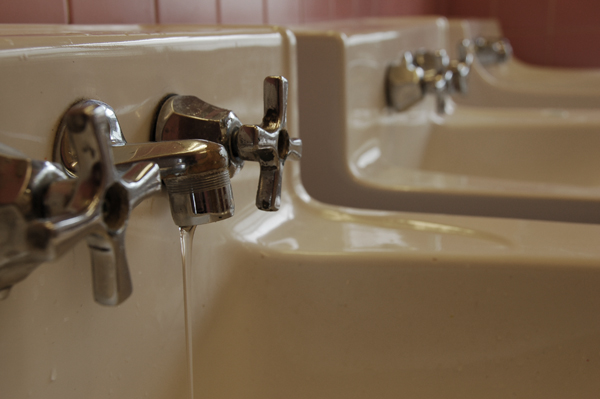

New Paltz became one of more than 100 other areas in Ulster County where residents could not consume water for five days, due to “increased turbidity” near local reservoirs caused by the high winds and heavy rain during Hurricane Irene, officials said.
The storm made its way up the coast to New Paltz on Aug. 28, leaving flooding and other damage in its wake. According to Director of Environmental Health and Safety Mike Malloy, the wind and rain increased turbidity – or the cloudiness or haziness of the water caused by particles not visible to the naked eye – in the aqueduct that provide drinking water to the area long after the storm has passed.
Starting on Sept. 8, a “Boil Water Notice” was issued to all village and town water supply users by the Public Works Department, calling for water for human consumption to be boiled for a minimum of three minutes to “ensure it is safe to drink.”
The New Paltz alert was eventually lifted on Sept. 13 because the water passed testing for two consecutive days, according to the Ulster County Department of Health and Environmental Science.
Malloy said the problems with the water were caused by switching from the local pond reservoir to the aqueduct system and back in a short period of time. He said because of this, high levels of dirt and minerals were found in the water and local officials took standard precautions – even though he said they may not have solved any problems.
“Boiling water is New York state protocol for the treatment of turbidity, but it doesn’t make any sense to me,” he said.“It just moves the water around.”
Before the storm touched down in New Paltz, Campus Auxiliary Services (CAS) ordered 15 water coolers and 26 cases of bottled water to ensure that it would be easily accessible due to excessive damage caused, said Executive Director of CAS Steve Deutsch. He said officials wanted all residence halls to have access to water during the storm, in addition to what was available in the emergency shelter center in the Elting Gym.
Deutsch said once the boil water alert took effect, the water coolers were moved to administrative offices and classroom buildings as well.
“We were notified as soon as the campus knew about the boil water alert. We notified the students and CAS brought over bottled water,” said Corinna Caracci, the director of Residence Life.
However, some students said the supply may have dwindled or they could not find coolers, leaving them without water during the alert period.
Stephanie Wexler, a fourth-year English major, said while there were no coolers in Crispell Hall, water bottles were provided by the residence hall. But Wexler said she still felt the orders given by the alert were disruptive.
“I always have my own stock of water bottles, but it was still inconvenient for us not to be able to use the fountains,” she said.
Other students said they think the particles in the water affected their physical health. Some students said after showering and washing their clothes in the water because they were told this was permissible, they were experiencing skin reactions and having residue in their hair because of the high levels of minerals and dirt in the water.
Third-year history major Aisha Muhammad said she thinks the water had an adverse effect on her skin.
“They told us the water was O.K. to shower in, but in the first couple of days my face broke out. It’s a little bit bizarre,” Muhammad said. “I just wish they told us more about what was actually in the water.”
If a boil water alert were to be enacted again, Malloy said he hopes that there would be a different way of communication established for disseminating information about it aside from the “heads up” from the Environmental Health and Safety Department.
However, Deutsch said he and his offices would do nothing substantially different aside from offering a greater variety of food and ordering more water.
“Each storm takes a different shape and by in large we did well considering the circumstances,” said Deutsch.
